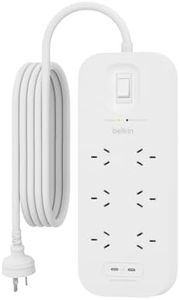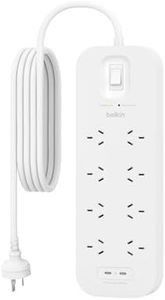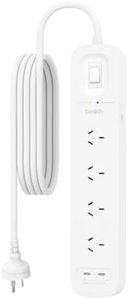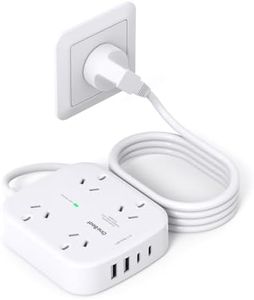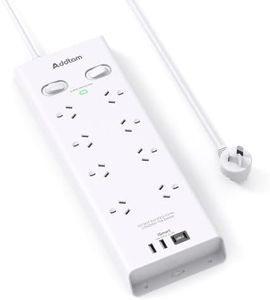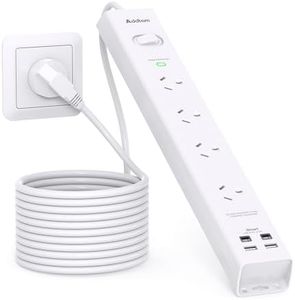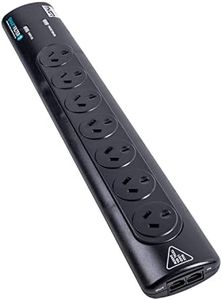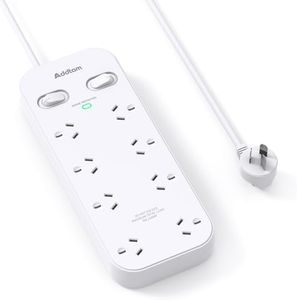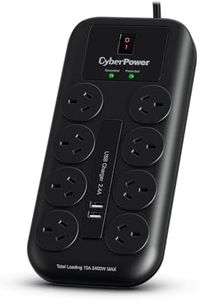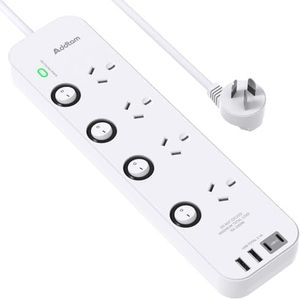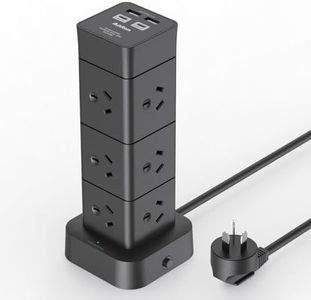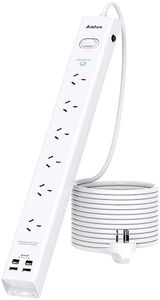We Use CookiesWe use cookies to enhance the security, performance,
functionality and for analytical and promotional activities. By continuing to browse this site you
are agreeing to our privacy policy
10 Best Surge Protectors
From leading brands and best sellers available on the web.Buying Guide for the Best Surge Protectors
Selecting the right surge protector is important because it helps safeguard your electronic devices from unexpected voltage spikes that can damage them. Many people tend to overlook key features, focusing only on the number of outlets, but there’s much more to consider. By understanding the main specifications, you’ll be better prepared to choose a surge protector that matches the needs of your home or office, keeping your devices safe and extending their lifespan.Joule RatingJoule rating tells you how much energy the surge protector can absorb before it fails. A higher value means the device can handle more power surges over its lifetime. For simple devices like lamps or chargers, a lower joule rating may be sufficient, but for expensive electronics like computers and TVs, a higher rating is preferable. Typically, under 1000 joules is best for small gadgets, 1000-2000 joules for everyday electronics, and above 2000 joules is ideal for home theaters or gaming setups. Think about what you want to protect, and choose a higher joule rating for more valuable or sensitive equipment.
Number and Type of OutletsThe number of outlets determines how many devices you can plug in, while the outlet type matters for compatibility with various plugs and USB devices. Standard models may have six to eight regular outlets, but if you have a lot of equipment, look for models with more outlets or ones that include USB ports for charging phones and tablets. Consider your current setup as well as possible future needs, and make sure the outlet spacing accommodates larger power adapters if you use them.
Clamping VoltageClamping voltage is the level at which the surge protector starts to divert excess electricity to the ground, protecting your devices. A lower clamping voltage means more sensitive protection, so your electronics experience fewer surges. Typical values are 330V, 400V, or 500V. For sensitive or expensive electronics, aim for lower clamping voltage (around 330V), while higher values may be acceptable for less delicate devices. Match the level of protection to the value and sensitivity of your electronics.
Response TimeResponse time indicates how quickly a surge protector reacts to a power surge. Faster response times mean your devices are exposed for a shorter duration, lowering the risk of damage. Most good surge protectors react in less than a nanosecond, but some may be slower. If you’re safeguarding valuable electronics, check for quicker response times to ensure better safety, but for basic appliances, this may be less critical.
Indicator LightsIndicator lights show whether the surge protector is working correctly and actively protecting your devices. If a surge protector loses its ability to protect after a big surge, the lights should alert you, so you know when it’s time for a replacement. Pick a surge protector with clear, easy-to-read indicators, especially if you want peace of mind and don’t want to manually test the device.
Cord Length and DesignCord length determines how far you can place the surge protector from your wall outlet, impacting convenience and room setup options. Shorter cords work well for desktop use, while longer cords are handy for reaching distant outlets or managing tricky spaces. Also, consider whether you need a flat or swivel plug to fit behind furniture. Choose cord length and design based on your room arrangement and where you plan to set up your devices.
UL CertificationUL certification shows that a surge protector has been tested for safety by a recognized agency. This certification provides confidence that the device protects as promised and isn’t likely to be a fire or electrical hazard. Always look for UL certification to ensure reliability and safety, regardless of where you plan to use the surge protector.
